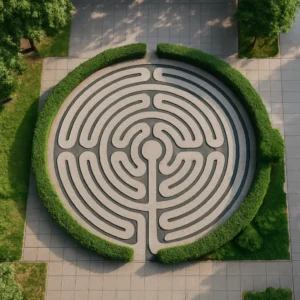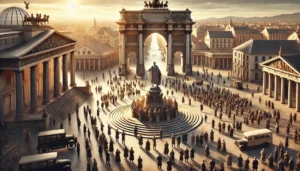As the world becomes increasingly interconnected, cities are evolving at an unprecedented pace. Urban environments are no longer just centers of population—they are becoming dynamic ecosystems shaped by digital innovation, data, and sustainable design. From smart infrastructure to AI-powered services, technology is fundamentally reshaping how cities function, grow, and serve their residents. The future of cities lies in their ability to adapt, optimize, and connect—all while improving quality of life, reducing environmental impact, and fostering inclusive communities.
Smart Infrastructure and the Internet of Things (IoT)
At the heart of the smart city revolution is the Internet of Things—a network of sensors, devices, and systems that collect and exchange data in real time. IoT enables cities to manage traffic flow, energy use, waste collection, and public safety more efficiently. Smart streetlights dim when no one is around. Trash bins signal when they’re full. Water systems detect leaks instantly. This real-time responsiveness not only saves money but makes urban spaces cleaner, safer, and more resilient.
Urban Mobility and Autonomous Transport
Transportation is undergoing a major transformation. Electric vehicles, autonomous shuttles, and app-based ride-sharing services are replacing traditional car ownership. Smart traffic lights and predictive analytics help reduce congestion. Cities are also investing in infrastructure for electric scooters, bikes, and pedestrian zones to create cleaner, more accessible transit options. Future urban mobility will likely be multi-modal, on-demand, and integrated seamlessly into daily life.
Sustainable Urban Design
Technology is enabling cities to become more environmentally responsible. Green building materials, energy-efficient architecture, and smart grids are reducing carbon footprints. Urban farms and vertical gardens help address food insecurity and improve air quality. Sustainable drainage systems, permeable pavements, and AI-powered climate monitoring prepare cities for climate change impacts like flooding and heatwaves. The city of the future is not only smart—but green by design.
Digital Governance and Citizen Engagement
E-governance platforms allow citizens to report issues, pay bills, vote, and access services online—streamlining bureaucracy and increasing transparency. Cities like Tallinn, Estonia, have led the way in offering digital citizenship, while others use mobile apps to collect feedback, crowdsource urban planning ideas, or provide real-time updates about public services. These tools empower citizens to have a direct voice in shaping their communities.
AI and Big Data for Urban Planning
Urban planners now have access to massive amounts of data—from satellite imagery to real-time sensor data—which helps them design more efficient, inclusive, and adaptive cities. AI algorithms can simulate traffic flows, predict population growth, and optimize public transit routes. They can even detect patterns of inequality or health risk, helping governments address problems before they escalate. Big data transforms intuition into actionable insight.
Connected Buildings and Smart Homes
Buildings themselves are becoming intelligent. Smart homes can adjust lighting, heating, and security systems based on user behavior or environmental conditions. In commercial spaces, energy management systems reduce consumption, while digital twin technology allows real-time monitoring of a building’s structure, efficiency, and safety. Connected buildings are not just comfortable—they are foundational components of sustainable smart cities.
Urban Resilience and Emergency Response
Technology also strengthens cities’ ability to respond to disasters and emergencies. AI-driven early warning systems, drone surveillance, and real-time communication networks help manage everything from natural disasters to public health crises. Smart infrastructure can automatically shut down gas lines during earthquakes or redirect traffic during evacuations. These systems make cities more prepared and less vulnerable in times of crisis.
The Rise of Digital Twins
Digital twins are virtual replicas of cities that use real-time data to simulate and test scenarios. Planners and policymakers can use these models to assess the impact of a new road, building, or policy before implementing it in the real world. Cities like Singapore and Helsinki are pioneering this approach, using digital twins to visualize future growth and make better decisions.
Challenges and Ethical Considerations
Despite their promise, smart cities also raise important ethical questions. Who owns the data? How is it protected? Can technology widen inequality if access is not equitable? Cities must balance innovation with inclusivity, ensuring that digital transformation serves all residents—regardless of income, age, or background. Transparent governance and inclusive design are key to building cities that are not only smart, but just.
Conclusion: Building Cities for Tomorrow
The future of cities is already unfolding—through each sensor installed, each sustainable building designed, and each digital platform launched. Technology is transforming urban life from the ground up, offering solutions to some of the most pressing challenges of the 21st century. But beyond smart systems and sleek designs, the real promise of future cities lies in their potential to create healthier, more connected, and more human-centered environments. In this urban evolution, technology is not the destination—it’s the tool that helps cities become truly livable for all.







